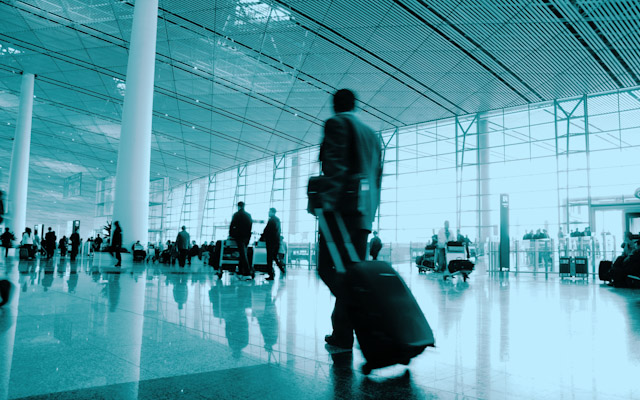As more business and leisure trips collide, International SOS & Control Risks' Aditya Luthra says companies need to reevaluate their degree of duty of care to travelling staff
Bleisure travel, or travel which combines work and leisure, has become commonplace as part of many an organisation’s job benefits. This has presented a conundrum that many organisations have found difficult to navigate.
While organisations now broadly understand and exercise duty of care for their staff, does this duty extend to employees who add on leisure time to their business trips (bleisure)? If it does, should organisations continue to exercise the same level of vigilance – including maintaining a degree of visibility over a business traveller’s itinerary?

A study in 2016 conducted by Carlson Wagonlit Travel, found that 20% of 1.9 million business travellers surveyed included time for leisure in their work trips (1). As the figure demonstrates, the workforce of today accepts the blurring of boundaries between work and other life domains. Will the same workforce also accept that there could be some concerns over compromised privacy as part of efforts to ensure their safety?
There are several factors for employers to assess – the risk level of the recreational activities or destination, the risk tolerance and work culture of the organisation, the awareness of the staff on the organisation’s duty of care obligations, and policies concerning the period when responsibility is firmly passed over to the individual traveller.
Problems posed by lack of employee visibility
When business ends and leisure begins during overseas assignments is often the time when communication and accountability between the employer and employee becomes increasingly sparse. Bleisure trips contain an aspect of adventure or exploration; employees are much less likely to structure their leisure itineraries, and may even switch hotels or turn off their corporate phones to minimise roaming fees.
This is likely to come with a change in the level of risk that employees expect compared to the business portion of the trip, and also in their level of vigilance against potential risks.
According to the Ipsos MORI Global Business Resilience Trends Watch 2018 survey, 44% of organisations surveyed found it challenging to communicate with employees during a crisis, and 39% found it challenging to track employee travel.
Imagine how these challenges could be compounded during bleisure trips (2).
Should an incident occur during any trip – bleisure or otherwise – it is critical that within an hour of the incident or what is referred to as the “golden hour”, employers are able to identify and assess who is affected, so that the appropriate security and medical help can be arranged and delivered swiftly.
Disasters, whether natural or man-made, can be unpredictable and while emergency response capabilities in disaster-prone countries have improved, having employee visibility adds another significant safeguard for both employer and employee.
Simple measures for employee visibility
The topic of employee visibility can be an uncomfortable one, as questions are raised about GPS tracking or by-the-hour updates. However, this paints an incomplete picture of what employee visibility means. Rather, it is ensuring that the necessary preparation and communication channels are in place to mitigate all potential risks in any environment.
The first step for business travellers is as simple as taking precautions like updating oneself on the latest security, medical travel and cultural conditions in their destinations before and during travel, which enables them to take the necessary actions to alert their company in the event of a crises. They can also share their location though a secure platform to ensure that their whereabouts are known to the company. Both these efforts can be achieved through the International SOS Assistance App. Managers are able to quickly access reports on the whereabouts of their travelling staff and decide on the most appropriate course of action, in consultation with travel risk management partners.
The second step is establishing a mode of communication that is available when needed. Communication platforms like the International SOS’ TravelTracker Incident Support allows travellers to be contacted quickly and reliably, and provides them and their employers with peace of mind. Business travellers who will benefit from an immediate channel for communication include those who experience minor incidents, sudden illnesses, or major catastrophes resulting in displacement or injury.
The responsibility of companies which have employees going on bleisure travel extends beyond simply approving such travel requests. The responsibilities and potential risks that comes with this type of travel must be taken into account.
The key lies in employees and employers determining where their respective responsibilities begin and end in such situations, and in setting up clear protocols of what each party can and should do in the event of a crisis or emergency. If this can be achieved, then the phenomenon of bleisure travel may not create significant disruption for employers and employees alike in the years ahead.
 Aditya Luthra is the security director – security solutions, Asia, International SOS & Control Risks. He leads client engagements around Asia and Australasia, developing bespoke solutions in support of organisations and managing their travel risk mitigation strategies, policies and procedures.
Aditya Luthra is the security director – security solutions, Asia, International SOS & Control Risks. He leads client engagements around Asia and Australasia, developing bespoke solutions in support of organisations and managing their travel risk mitigation strategies, policies and procedures.





















